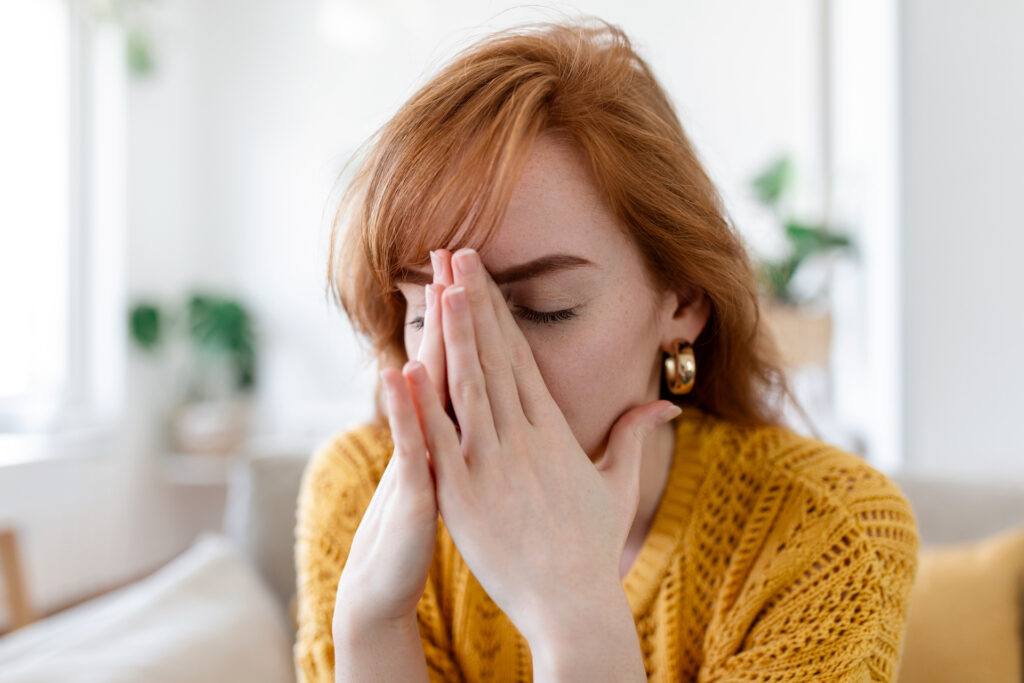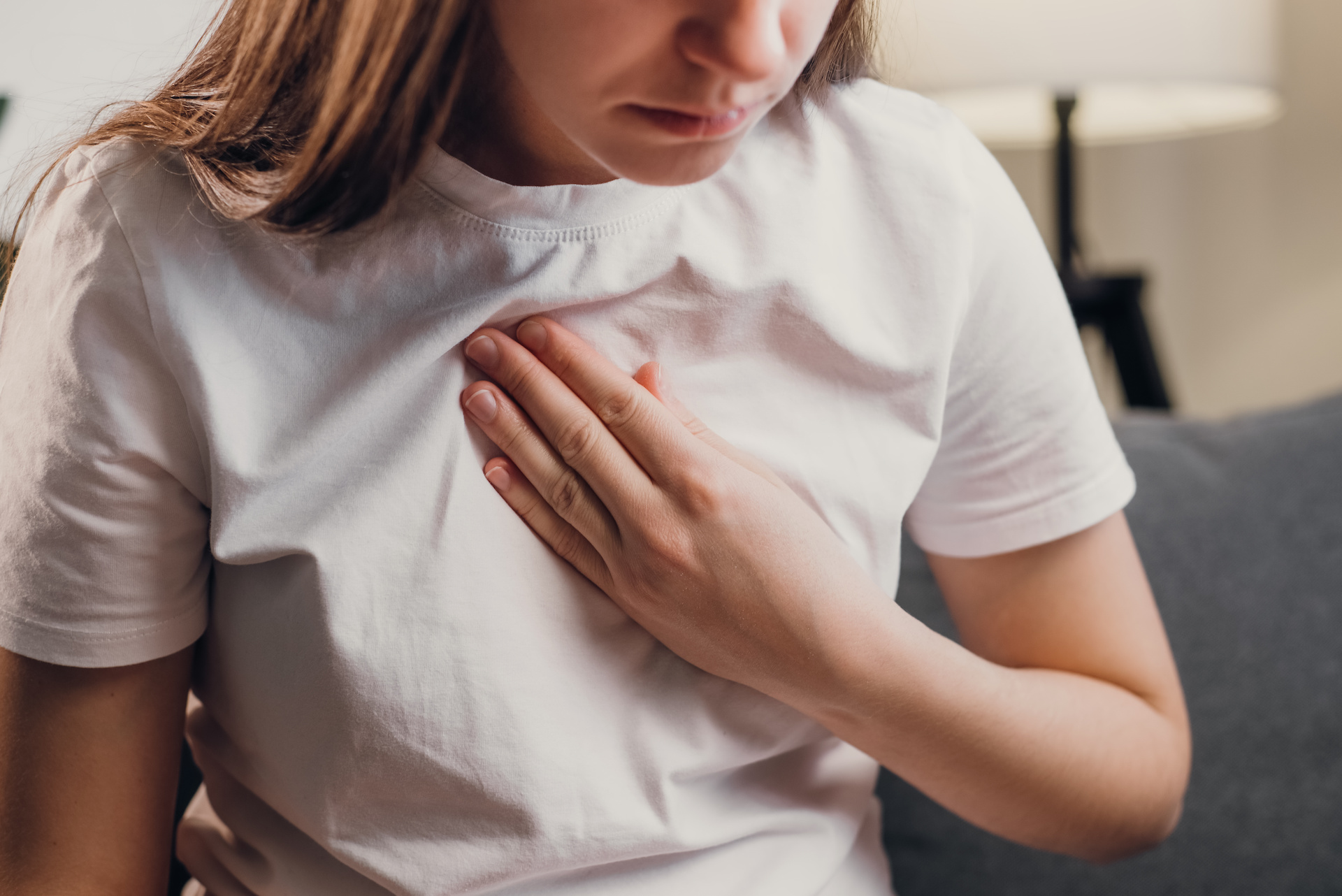Do you often feel like your heart is pounding, your breathing is laboured, and you’re overwhelmed with fear?
If so, you might be experiencing anxiety attacks or panic attacks. And while many people use the terms interchangeably, they are two very different things. It’s important to identify the difference between them to get the proper treatment if you experience either.
What is a Panic Attack?
When most people think of a panic attack, they envision someone gasping for air and trembling with fear. And while this can be a symptom of a panic attack, it’s not the only one. Panic attacks can also cause chest pain, nausea, a racing heart, sweating, chills, and dizziness.
A panic attack is a sudden episode of intense discomfort or fear. Though panic attacks can be highly distressing, they are usually brief—the symptoms typically peak at 10 minutes and begin to fade over the next 30 minutes.
According to the DSM-5 (Diagnostic and Statistical Manual of Mental Disorders), a panic attack “triggers severe physical reactions when there is no real danger or apparent cause.” However, the lack of an apparent cause does not negate the likelihood of an underlying one.
Frequent panic attacks are a possible symptom of panic disorder, often linked to trauma. For instance, witnessing a sudden traumatic death can trigger a sudden panic attack, where a person may die at any moment.

Most people with panic attacks do not have a diagnosed anxiety disorder, but panic attacks are still a serious problem that can cause great distress. Panic attacks can feel like you’re losing control and often happen without warning. They can be very frightening. If you have recurrent panic attacks, it’s important to seek professional help so that you can learn how to manage them.
What is an Anxiety Attack?
Anxiety attacks are often characterized by unease, worry, or fear.
Unlike a panic attack, which is more pronounced and sudden, an anxiety attack typically builds gradually over time in response to certain triggers or situations. However, despite anxiety attacks stemming from specific situations, no single known cause exists.
Due to the gradual onset of symptoms, anxiety attacks are commonly linked to anxiety disorders, as they tend to cause more psychological symptoms such as fear, racing thoughts, and difficulty concentrating.
Even though the DSM-5 does not clinically recognize anxiety attacks, it doesn’t make them any less real or the intense feelings any less valid for those who experience them. It simply means that what an anxiety attack looks like for one person may not look the same for another.

In other words, the colloquial use of the term “anxiety attack” by those with an anxiety disorder, along with its lack of diagnostic recognition, leaves the symptoms and signs open to interpretation.
Anxiety Attack vs. Panic Attack: How to Recognize the Difference
It can be tricky to differentiate a panic attack from an anxiety attack by merely looking at the symptoms – particularly the physical ones, as the two can share many of the same, including:
- An increased heart rate
- Heart palpitations
- Sweating
- Dry mouth
- Shaking
- Chest pain
- Shortness of breath
- Tightness in the throat
- Dizziness or feeling faint
For this reason, one way to distinguish the two based on physical symptoms is to take note of those that build more gradually or last longer. These symptoms, more common in anxiety attacks, include disturbed sleep, tenseness, increased startle response, and excessive fatigue.
Similarly, both anxiety and panic attacks can contribute to fear, restlessness, and distress. However, the mental symptoms of panic attacks are typically more excessive, where the fear is more intense, and a sense of detachment or impending doom is likely to occur.
The key difference between anxiety and panic attacks lies in their onset, duration, and intensity of symptoms. Anxiety builds up slowly and stays with a person for long periods; a panic attack has more severe and sudden physical symptoms than anxiety (such as chest pain).
In addition, while both can cause emotional distress, people who experience panic attacks often describe them as feeling like they are having a heart attack or dying—which can add a layer of fear and confusion over what’s happening.
Breathe, Reflect, and Refocus at Georgia Strait Women’s Clinic
It can be difficult to stay calm and remember what to do when you’re in the throes of an anxiety or panic attack. But it’s important to remember that you can manage them.
One of the best things you can do when you’re having an anxiety or panic attack is to focus on your breathing. Take slow, deep breaths and count to four or higher as you inhale and exhale to calm your body and clear your mind.
It can also be helpful to reflect on what might be causing your anxiety. Is there something specific that’s triggering your attack? Once you identify the source of your anxiety, you can start to work on addressing it.
Finally, take a moment to refocus your thoughts. Instead of dwelling on your fear, think about something positive or calming to help ease your anxiety and prevent future attacks.
If you’re experiencing panic or anxiety attacks, our Georgia Strait Women’s Clinic team can help walk you through these steps. We offer personalized treatment and therapy services to help women get their lives back on track. Contact us today to learn more.




